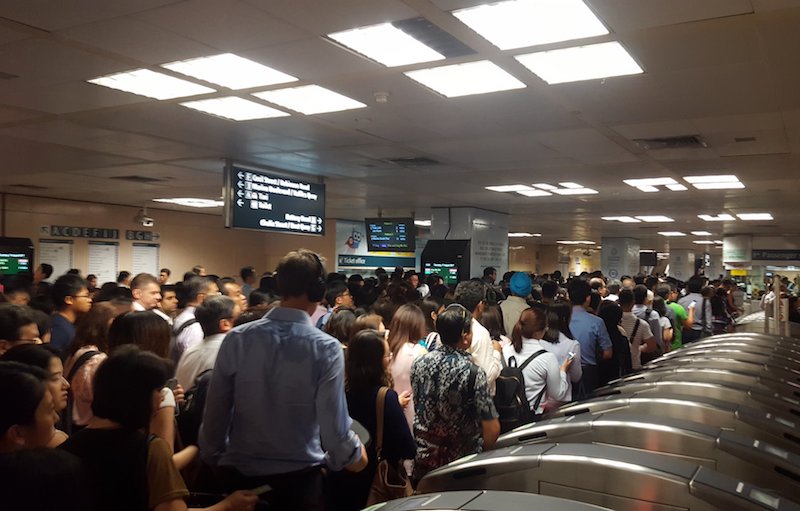We don’t need an educated response on question-and-answer site Quora to tell us that Singaporeans have been highly frustrated by the (relatively) poor state of public transport these days — particularly the MRT service, which has seen a significant amount of breakdowns over the last couple of months.
What could help alleviate our exasperation, however, is this detailed clarification — not by SMRT, the Land Transport Authority, or the Ministry of Transport, but by Mr Tsoi Mun Heng, Singapore Institute of Technology’s Vice President of Planning. As someone who’s had a hearty portfolio that includes prior stints as a logistics director in the Ministry of Defence, the Republic of Singapore Air Force, and executive roles in other organizations, Tsoi is definitely more than capable to answer why the Singapore government hasn’t resolved the issues plaguing MRT services yet.
Tsoi points out that an inherently complex issue is inherently difficult to solve, with multiple factors that will probably take at least 10 years to see positive changes, by his estimates. Read his easily digestible discourse on Quora, and check out the highlights below.
On the difficulty of maintaining multiple systems
“To begin with, there are multiple systems involved: trains, power supply, tracks, weather/climate, control and signaling systems, even platform doors. A look at the problems that have cropped up in recent years have shown up problems in all these diverse systems. A simple thing like a faulty switch on a platform door can hold up the trains (I was caught in that – gave up waiting). Some are difficult to even troubleshoot – like the malfunctioning train that was sending out spurious signals and took a team of expert engineers to tease out the fact that problems happened when this particular train was passing by.
The more systems there are, the more ways in which they interact, the more ways in which seemingly small failures can affect the larger system.”
On how work culture is a key part of the overall issue
“We allowed the MRT system to be run on economic (or profit-making) considerations, assuming that somehow the market will result in “efficient allocation of resources”. We know what happened. Engineering and maintenance were sacrificed to maintain profitability. Knowledge and skills were allowed to leak out. Over time, attitudes deteriorated. That fatal accident involving irregular release of people to work on a live track is a symptom of an attitude problem.
Put the right people in place, and then they can work on those engineering problems and put them right. But it takes time. The people who left the system won’t come back. The new ones have little knowledge and experience. It will take time to rebuild the engineering and maintenance expertise they had 30 years ago. It takes time to change a culture which has been lost. I think it will take at least 10 years.”
On how the MRT became a victim of its own success
“The original NS/EW MRT system is not a true city subway or metro system for getting around town. It is actually a commuter or regional train system to bring in the masses from the suburbs into the city (The NE line is also a regional line serving a separate region). The bus system was modified to reduce duplication with the MRT system. That means putting all the eggs in one basket. It worked well when it was still reliable, and became a victim its own success. The more people relied on the MRT, the bigger the problem a breakdown causes.”



